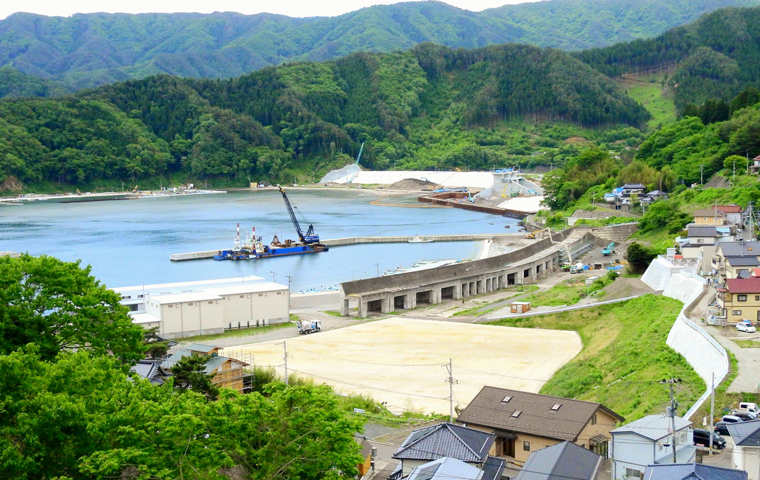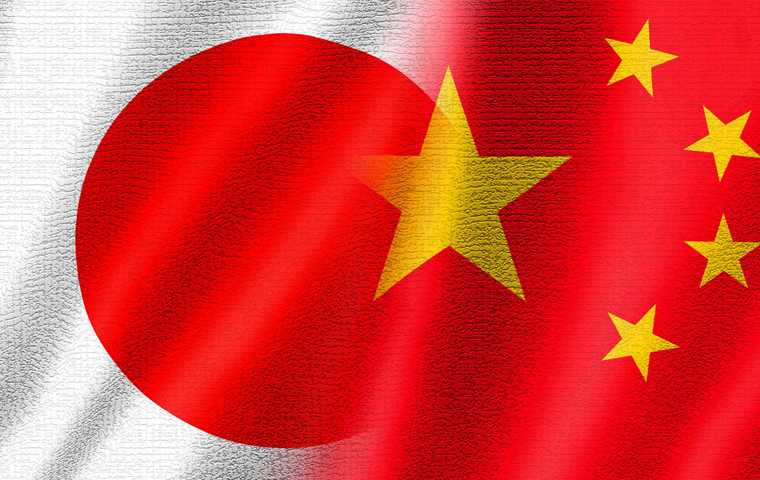Fourteen Years Since 3/11: Prayer and the Road Toward the Future
Related Articles
A Day Enveloped in Prayer, Fourteen Years On
At 2:46 p.m. on March 11, 2025, Japan fell silent for one minute. At the exact time when, fourteen years earlier, the largest earthquake and tsunami in the nation’s recorded history struck eastern Japan, people across the country paused to offer profound condolences for the more than 20,000 who died or remain missing. At the government-hosted memorial ceremony, the Prime Minister reaffirmed an unwavering commitment to reconstruction. Their Majesties the Emperor and Empress, their elder daughter Princess Aiko, and the Emperor Emeritus and Empress Emerita also offered silent prayers at their residence and workplaces. From the earliest days after the disaster, the imperial family has visited shelters and kept the afflicted in their thoughts—their prayers remaining a symbol of sharing in the people’s sorrow. Fourteen years on, these nationwide official memorials have taken root as a civic rite.
Beneath that quiet prayer, however, lie countless ongoing personal stories. In the disaster-hit areas, diverse, locally rooted forms of remembrance unfolded. In Iwate Prefecture, citizens laid flowers and pressed their hands together in prayer at events such as the “Lights of Prayer” in Morioka, the memorial at Rikuzentakata’s Miracle Pine Hall, and Kamaishi’s Kamaishi Prayer Park. In Sendai, Miyagi Prefecture, a junior high school wind ensemble performed a memorial concert—young people visibly taking up the work of memory. In inland areas like Yamagata, which hosted many evacuees, “Candle Nights” were held, underscoring that the memory of the disaster is shared not only along the coast ravaged by the tsunami, but throughout Tohoku through acts of support. Especially in Fukushima’s towns affected by the nuclear accident—Futaba, Okuma, Namie—memorials were not only prayers for a natural disaster; they were spaces where the deep sense of loss felt by those driven from their homes met complex feelings about renewal. For families of the more than 2,520 still missing, the day is steeped in the deepest, quietest grief. March 11 remains a day of unending searching—and, in places like Otsuchi’s “Wind Phone,” a day to seek connection with those who are gone. Public ritual and private pain that never fully heals—on this fourteenth March 11, these two layers of memory overlapped.
Light and Shadow of Reconstruction: Progress and Wounds That Remain

Over fourteen years, the landscape of the disaster zone has changed dramatically. Above all, the “hard” side of reconstruction—infrastructure—has made remarkable progress. Full openings of the Sanriku Coastal Road and the Joban Expressway are emblematic. These roads did more than shorten travel times. Linked with the inland Tohoku Expressway to form a “double network,” they have upended logistics norms, becoming new arteries for regional economies—major transport companies have opened new depots in cities like Kamaishi and Kesennuma, while cargo throughput at Kamaishi Port has doubled. Roughly 30,000 public disaster housing units and 18,000 lots for hilltop relocation have been built, and the number of evacuees—470,000 at the peak—has fallen to about 41,000, allowing many to restart life in safe, permanent homes.
Yet the brighter the light of physical reconstruction shines, the darker the shadow of “soft” challenges becomes. Fisheries and seafood processing, once core industries, have restarted at 98% of facilities, but struggle with low catches and persistent reputational damage linked to the Fukushima accident; sales recovery remains incomplete. In contrast, manufacturing shipments have surpassed pre-quake levels—revealing a new economic disparity created by reconstruction. Rebuilding daily life is complex. In newly built public housing, former neighborhood ties have frayed; isolation among the elderly is a serious problem. Municipalities and NPOs continue indispensable efforts: mental health support and community-building to foster new social bonds. Meanwhile, only about 70% of land vacated by hilltop relocations has been repurposed, posing a fresh challenge: how to recreate vibrant town centers. Reconstruction is not a simple return to the past; it is a painful structural transition, where traditional industrial and community structures are pressured to change even as new infrastructure brings convenience.
Fukushima’s Path Forward: The Challenge of Decommissioning and New Industry Creation
Fourteen years on, Fukushima remains on the front lines of two undertakings the world watches intently. One is the titanic struggle with a legacy of the past: decommissioning the Fukushima Daiichi Nuclear Power Station. Expected to take 30–40 years, the project presents humanity with unprecedented technical hurdles. Preparations continue to remove melted fuel debris using remotely operated robots in high-radiation environments—an extremely steep path ahead. The ocean discharge of water processed by the ALPS multi-nuclide removal system is deemed unavoidable to advance decommissioning, yet has prompted import bans on Japanese seafood by countries including China, striking a heavy blow to domestic fishers. Scientific explanations of safety are entangled with geopolitical calculations and media phrases like “Fukushima water,” casting an international shadow over Fukushima’s recovery.
Running in parallel, however, is another grand project to build the future: the Fukushima Innovation Coast Framework. This national strategy clusters cutting-edge industries—decommissioning, robotics, energy, medicine, aerospace—along the coastal Hamadōri region to forge a new industrial base. Results are tangible: as of March 2024, 433 companies had located there, creating 4,972 new jobs. Facilities include an mRNA vaccine active-ingredient plant, production of carbon nanofibers, and a biomass plastics factory using non-edible rice—companies of the future choosing Fukushima as a base. Business-matching efforts between incoming and local firms are underway to spread economic benefits throughout the region. Technologies born from the reckoning with the past—decommissioning—are seeding industries of the future. As a high school student vowed at a memorial to “be a bridge between the world and Fukushima,” the prefecture is transforming from “disaster area” into a singular symbol where humanity’s technical challenges and hope for the future coexist.
Fighting Fading Memory: Passing the Baton of Lessons to the Next Generation

Fourteen years have also brought a quiet yet certain threat to the disaster areas: the erosion of memory. To confront this unseen foe, numerous memorial museums established in the three hardest-hit prefectures serve as bulwarks of “managed memory,” preserving records and lessons institutionally. The Iwate Tsunami Memorial Museum has surpassed 1.3 million visitors, among others that have faithfully conveyed facts and lessons. Yet data from 2024 show that, for the first time since COVID-19, overall visitor numbers declined, suggesting public interest may be waning.
Complementing these institutions are the kataribe—survivor-storytellers who pass on “living memory” in their own words. Their testimonies carry irreplaceable force—but many are aging, and the sustainability of their activities is in doubt. How to hand the baton from those who lived through the disaster to a new generation of storytellers who did not—this is a race against time and an urgent task. One answer lies in evolving disaster education for children with no direct memory of 3/11. Schools now go beyond basic drills to more hands-on learning: using local hazard maps to identify dangers around home with parents; actually walking evacuation routes to feel risks firsthand. Students visit sites preserved as disaster remnants, such as the former Okawa Elementary School, and listen to bereaved families—educational practices that make past tragedy personal. This not only teaches how to protect one’s life; it cultivates active citizens who contribute to community safety.
Perhaps the greatest legacy of the Great East Japan Earthquake is that its lessons spurred a fundamental overhaul of national disaster preparedness. Anticipating the next national crisis—the Nankai Trough megathrust earthquake—Japan has advanced concrete measures nationwide: building tsunami evacuation towers, strengthening seismic and flood resilience for government facilities that serve as disaster-response hubs, and revising disaster-related laws to enhance information sharing between national and local governments. Transforming the memory of tragedy into the power to save future lives—this quiet, persistent labor is how Japan, fourteen years on, manifests its responsibility to the future.



